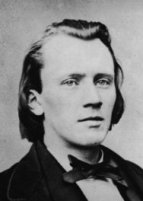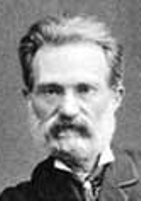Presents
Brahms Hungarian Dances for Cello & Piano
 |
Soundbites - |
 |
|||
|
BOOK 1 |
BOOK 2 |
BOOK 3 |
BOOK 4 |
||
Arranged by Alfredo Piatti
Brahms' Hungarian Dances came about when he met the Hungarian violin virtuoso Ede Reményi in 1850 and accompanied him in a number of recitals over the next few years. Reményi introduced Brahms to "gypsy-style" music such as the csardas. Taken with the Hungarian style music he 'discovered, Brahms wrote 21 Hungarian Dances, originally for piano four hands. Only numbers 11, 14 and 16 were entirely original compositions. The better-known Hungarian Dances include Nos. 1 and 5, the latter of which was based on the csárdás "Bártfai emlék" (Memories of Bártfa) by Hungarian composer Béla Kéler, which Brahms mistakenly thought was a traditional folksong. Ultimately, these 21 dances were among the most popular and lucrative works he ever composed. His publisher, the ever greedy Nicholas Simrock, immediately asked Brahms for arrangements. Brahms obliged by orchestrating Nos.1, 3 and 10. Other composers have orchestrated the rest. Among the better known composers are Antonín Dvořák (Nos. 17 to 21), Andreas Hallén (Nos.2, 4 and 7), Paul Juon (No.4), and Hans Gál (Nos.8 and 9).
Outside of the arrangements for orchestra, the best known arrangements were for violin and piano made by Brahms' close friend the virtuoso violinist Joseph Joachim and one for cello and piano by the Italian virtuoso cellist Alfredo Piatti (1822-1901). Piatti was a long standing member of the most famous version of the Joachim String Quartet (Heinrich Ernst and Joachim, violins, Henri Wieniawski Viola and Piatti on cello). Through Joachim, Piatti got to know Brahms and his music.